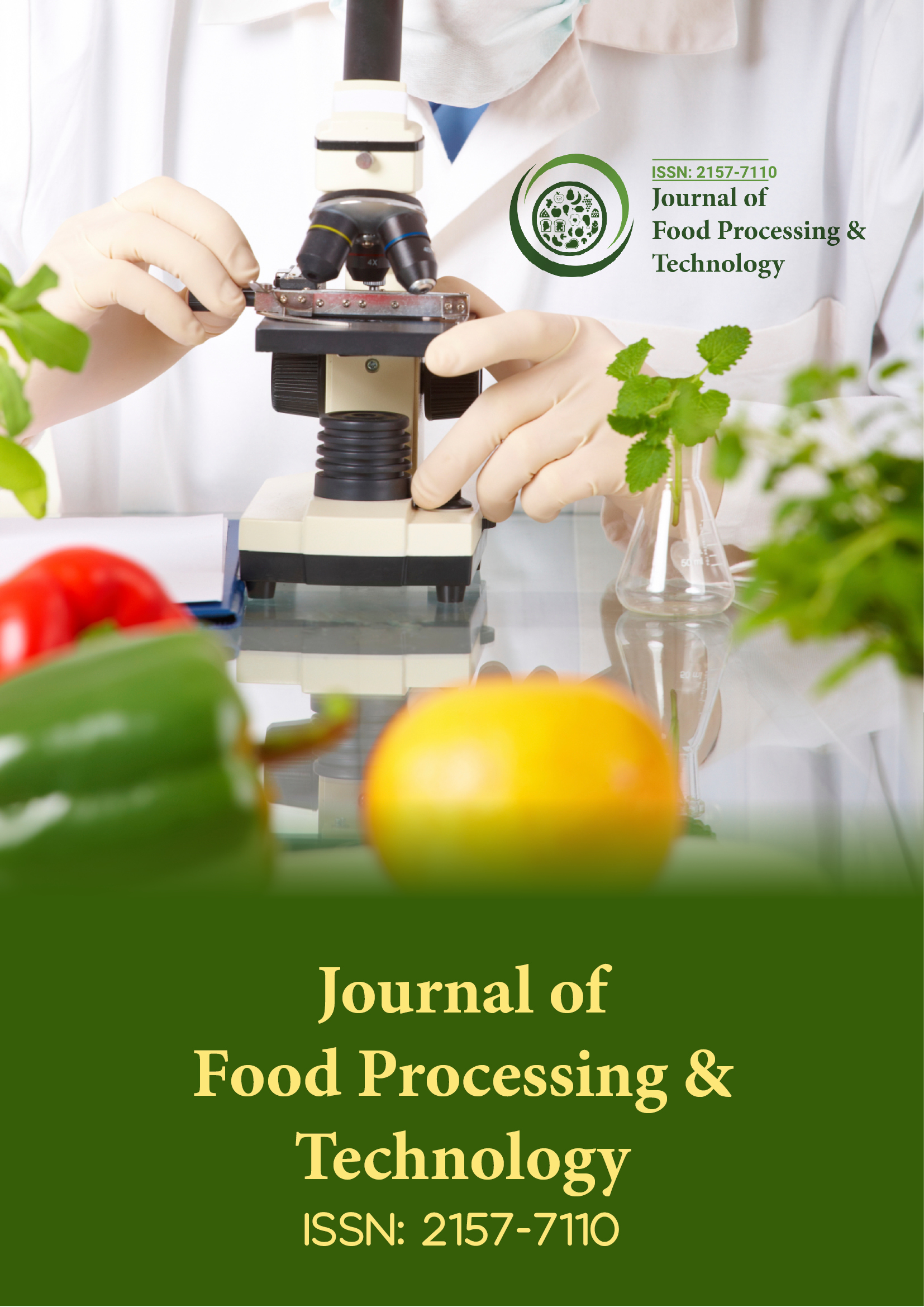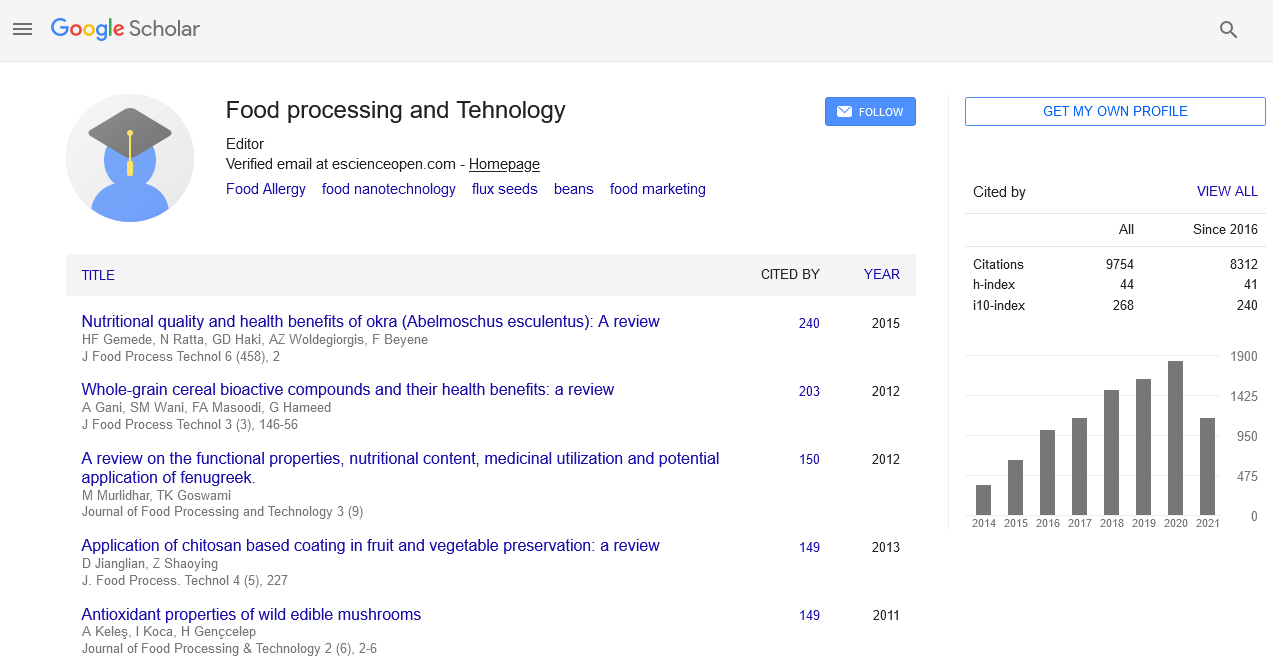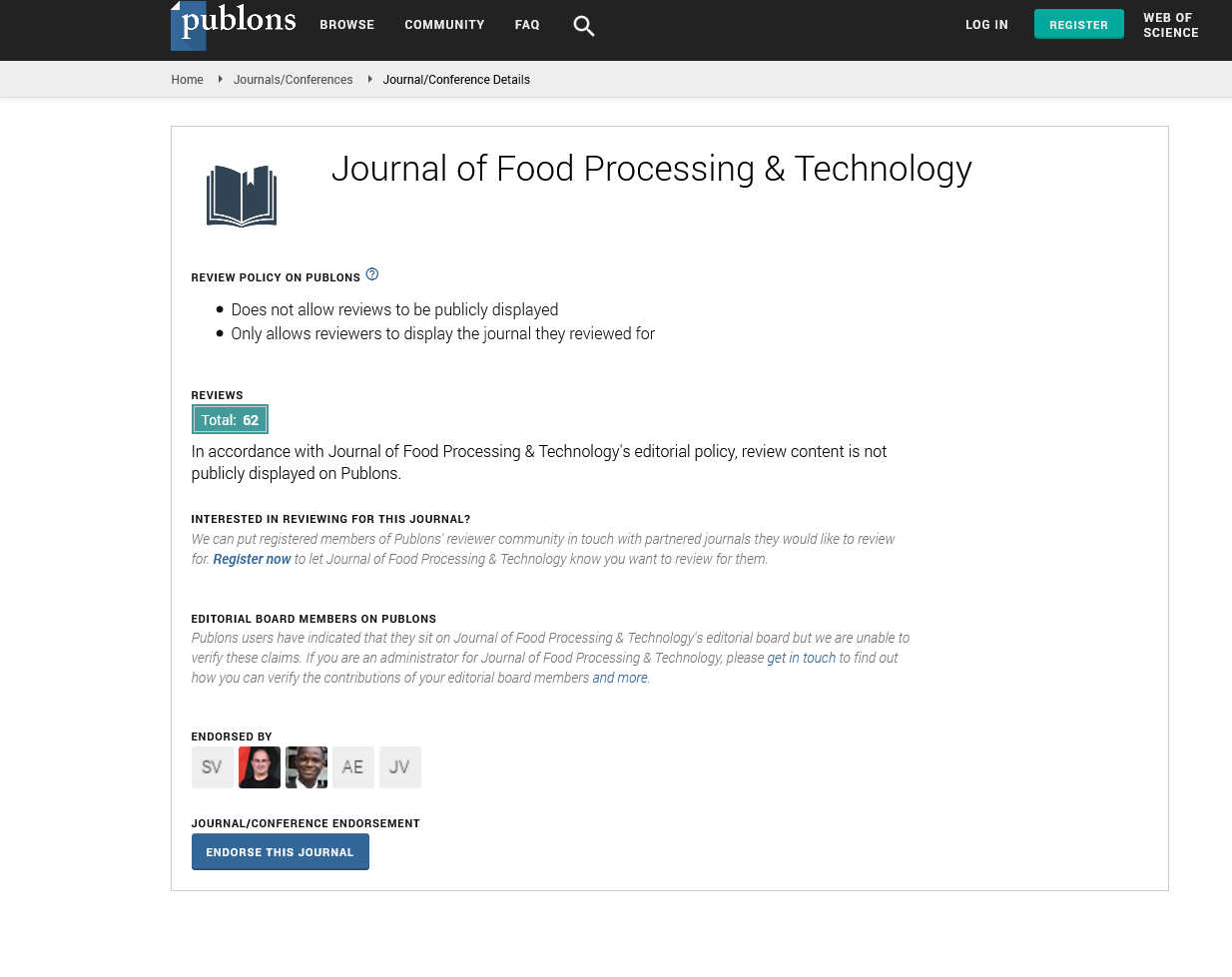Indexed In
- Genamics JournalSeek
- Academic Keys
- JournalTOCs
- China National Knowledge Infrastructure (CNKI)
- Access to Global Online Research in Agriculture (AGORA)
- Centre for Agriculture and Biosciences International (CABI)
- RefSeek
- Directory of Research Journal Indexing (DRJI)
- Hamdard University
- EBSCO A-Z
- OCLC- WorldCat
- Scholarsteer
- SWB online catalog
- Publons
- Euro Pub
- Google Scholar
Useful Links
Share This Page
Journal Flyer

Open Access Journals
- Agri and Aquaculture
- Biochemistry
- Bioinformatics & Systems Biology
- Business & Management
- Chemistry
- Clinical Sciences
- Engineering
- Food & Nutrition
- General Science
- Genetics & Molecular Biology
- Immunology & Microbiology
- Medical Sciences
- Neuroscience & Psychology
- Nursing & Health Care
- Pharmaceutical Sciences
Commentary - (2025) Volume 16, Issue 3
Enhancing Flavor Retention in Dried Herbs Through Advanced Drying Technologies
Daniel Fischer*Received: 26-May-2025, Manuscript No. JFPT-25-29652; Editor assigned: 28-May-2025, Pre QC No. JFPT-25-29652; Reviewed: 11-Jun-2025, QC No. JFPT-25-29652; Revised: 19-Jun-2025, Manuscript No. JFPT-25-29652; Published: 25-Jun-2025, DOI: 10.35248/2157-7110.25.16.1164
Description
Dried herbs such as basil, oregano, thyme, and mint are widely used in culinary practices, but the drying process often reduces their aromatic compounds and volatile oils, which are essential for flavor. Preserving these delicate components has become a primary focus in food processing research, and innovative drying methods are now emerging to address this challenge. Traditional sun drying and hot air drying remain the most common techniques, but both expose herbs to elevated temperatures and prolonged exposure to oxygen. This leads to degradation of essential oils and loss of characteristic aroma. To overcome these issues, low-temperature drying technologies such as vacuum drying and freeze-drying are being studied. Freeze-drying, in particular, removes water by sublimation under low pressure, retaining more volatile compounds and producing herbs with flavors closer to fresh. Another approach is microwave-assisted drying, which offers rapid moisture removal while minimizing prolonged heat exposure. By shortening drying times, this method reduces the loss of sensitive aromatic molecules. Similarly, infrared drying has shown potential in preserving color and bioactive compounds due to its selective heating capability.
Encapsulation techniques are also being integrated into herb processing. By coating volatile oils with carriers such as maltodextrin before drying, processors can protect aroma compounds from degradation. These encapsulated flavors remain stable during storage and are released when the herb is rehydrated or cooked. Consumer demand for high-quality dried herbs is rising in both culinary and nutraceutical markets. Maintaining authentic aroma not only enhances consumer satisfaction but also supports the functional properties of herbs, many of which contain antioxidants and antimicrobial compounds. With continuous research, advanced drying methods can ensure dried herbs retain their original flavor profile, making them more valuable for both home cooking and industrial applications.
In addition to consumer demand, industrial requirements also drive the adoption of advanced drying technologies. Manufacturers aim to produce herbs with consistent quality, extended shelf life, and minimal loss of flavor and color. Innovative techniques like freeze-drying, microwave-assisted drying, infrared drying, and encapsulation allow processors to achieve these goals while meeting food safety and regulatory standards. Ongoing research focuses on optimizing drying parameters, including temperature, pressure, microwave intensity, and drying time, to maximize retention of aroma, color, and bioactive compounds. Studies also explore combinations of drying technologies, such as vacuum freeze-drying or infrared-assisted microwave drying, to further improve efficiency and product quality.
In conclusion, drying is a critical step in the preservation of herbs, and advances in technology have significantly improved the quality of dried products. While traditional methods often compromise flavor, aroma, and nutritional content, innovative approaches such as freeze-drying, vacuum drying, microwave-assisted drying, infrared drying, and encapsulation ensure that herbs retain their sensory and functional properties. These high-quality dried herbs meet the growing expectations of consumers and manufacturers, offering authentic flavor, extended shelf life, and preserved health benefits. As research continues and processing methods evolve, the future of dried herb production lies in the combination of efficiency, sustainability, and superior product quality, providing valuable resources for culinary, nutraceutical, and industrial applications.
Citation: Fischer D (2025). Enhancing Flavor Retention in Dried Herbs Through Advanced Drying Technologies. J Food Process Technol.16: 1164.
Copyright: © 2025 Fischer D. This is an open access article distributed under the terms of the Creative Commons Attribution License, which permits unrestricted use, distribution and reproduction in any medium, provided the original author and source are credited.


